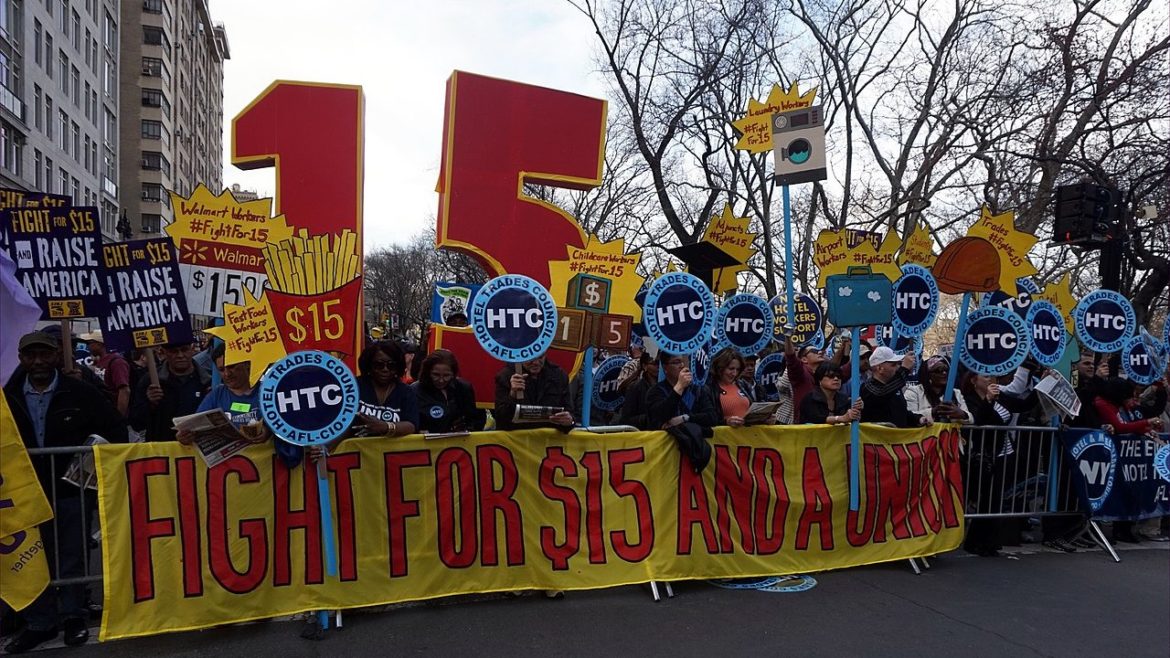Precious metals are apparently waking up. And here is where you can find the best deals.
Site:
Precious metals news
We are entering the third and final phase of the precious metals bull market.
As 2023 ends, Shenzhen, traditionally known for technology, is rapidly gaining recognition as a new fashion hub in China, especially in jewelry. The city's large jewelry market experienced a significant increase in consumer interest and demand. Shenzhen hosted major fashion events like the Shenzhen Eyewear Fashion Week and the China International Brand Underwear Fair, attracting global fashion buyers and featuring top brands like Dior and Versace Home. This transformation into a fashion center is supported by its strong supply chain capabilities, evident in its diverse fashion sectors including high-fashion, luxury watches, and designer eyewear. Shenzhen's fashion industry is notably robust, with over 2,500 apparel companies and a 42% share in global watch production, highlighting its emerging status in the global fashion landscape.
Historical data from the World Gold Council indicates that gold typically fares well in January, with an average return of 1.79% since 1971 and positive gains in nearly 60% of Januaries since then. This trend strengthens in the 21st century, with gold rising in 70% of Januaries since 2000. Key factors contributing to this include yearly portfolio rebalancing, a seasonal dip in real yields, and increased demand for gold in East Asia prior to the Lunar New Year. However, the Council cautions that this trend is not absolute, noting years like 2021 and 2022 when gold didn't rise in January, often correlating with a strengthening US dollar. As 2024 approaches, the pause in Federal Reserve rate hikes and potential cuts could weaken the dollar, potentially setting up gold for another strong January performance.
In 2023, gold prices soared to new highs, bolstered by its status as a safe-haven asset amid economic uncertainties. The metal’s demand rose as investors sought protection against inflation and currency devaluation, influenced by geopolitical tensions and market volatility. Despite some fluctuations, gold maintained an overall upward trend, reflecting a complex mix of central bank policies and global economic factors. Looking into 2024, gold continues to be viewed as a vital asset for hedging against financial risks and maintaining portfolio stability.
Sometimes one single solitary event or individual can characterize an entire year — be it an outbreak, economic downturn, or a political uprising. However, 2023 was marked by a confluence of varying influences. Economic concerns and rising prices dominated public discourse initially, before the conflict in Gaza shifted global focus. Amid these developments, the prospect of Donald Trump's presidential run was a constant presence. The New York Times has presented a series of ten graphs offering insight into the defining moments of 2023.
We've reached the end of another year. A new year is always a good time for reflection. And maybe even some resolutions. In this episode of the Friday Gold Wrap podcast, host Mike Maharrey talks about the trajectory of gold as we enter the new year, explains an economic truth, offers some thoughts on New Year's resolutions, and makes a big announcement.
 DOOMBERG PEAK CHEAP OIL MYTH & NEW WORLD'S OIL: SRSrocco Rebuttal... Can't Fix Stupid
DOOMBERG PEAK CHEAP OIL MYTH & NEW WORLD'S OIL: SRSrocco Rebuttal... Can't Fix StupidDecember 29, 2023
When I thought things couldn't get any more Bizarre, it seems that Doomberg now believes in the Energy Tooth Fairy. Honestly, when I saw his Peak Cheap Oil Myth article, I fell off my chair. This is my rebuttal to Doomberg, which I believe you will find quite interesting...
As of mid-November, only 60% of those with federal student loans due in October have made payments. The U.S. student loan debt exceeds $1.7 trillion, surpassing credit card and auto loan debts, with the average loan balance at graduation now around $30,000, up from $10,000 in the 1990s. Astra Taylor, co-founder of the Debt Collective, describes the situation where 40% of borrowers haven't paid as a "massive student debt strike."
Dec 28, 2023 - 13:37:06 PST
Central banks globally are revising their economic forecasting methods after failing to anticipate the recent surge in inflation. The European Central Bank, the Federal Reserve, and the Bank of England were caught off guard by the inflationary spike, triggered by the end of COVID-19 lockdowns and further exacerbated by the energy crisis following Russia's invasion of Ukraine. These unexpected developments led to the worst inflation in decades. In response, central banks have implemented significant rate increases and are now conducting thorough analyses to understand their forecasting shortcomings. ECB President Christine Lagarde emphasized the need to move beyond traditional models and consider a wider range of factors in future economic predictions.
Several emerging economies are exploring commodity trade without the U.S. dollar to decrease their dependence on it. Countries like Russia and Iran, hindered by U.S. sanctions, have increased oil sales in alternative currencies, finding willing buyers in nations such as China and India, often at reduced prices. While less critical for other major commodity exporters, countries like Brazil, the UAE, and even Saudi Arabia are making moves to enable non-dollar trades. Natasha Kaneva from JPMorgan Chase notes a significant shift, with approximately 20% of global oil now traded in currencies other than the dollar. The trend is highlighted by a rise in major non-dollar commodity contracts, growing from just two between 2015-2021 to twelve in 2023, primarily involving Russian and one UAE seller. These figures refer to physical commodity transactions, not futures trading in financial markets.
 Revolutionary Tax Reforms: Oklahoma and Missouri to Redefine Gold and Silver?
Revolutionary Tax Reforms: Oklahoma and Missouri to Redefine Gold and Silver?Dec 28, 2023 - 06:09:04 PST
In a groundbreaking move, lawmakers in Oklahoma and Missouri are pushing for legislation that could redefine gold and silver, not as commodities but as money. The proposed bills for the 2024 legislative session aim to abolish state capital gains taxes on the sale of gold and silver bullion. In Missouri, Representatives Doug Richey and Bill Hardwick, along with Senator William Eigel, have introduced bills HB1867, HB1955, and SB735, respectively. Similarly, in Oklahoma, Senators Shane Jett and Nathan Dahm have filed SB1507 and SB1508. The successful passage of these bills would not only eliminate capital gains taxes on gold and silver but also significantly reduce the investment cost of these precious metals.
The LBMA London Gold Price has broken its all-time record as 2023 draws to a close, marking a significant milestone in gold's rapid appreciation throughout the year. Opening at $1835.05 on January 3, the precious metal has seen a substantial gain of $232.10 or 12.65%, reaching new heights by the year's end. This remarkable surge represents a 633.7% increase since the start of the century, highlighting gold's enduring appeal as a reliable store of value. Ruth Crowell, CEO of LBMA, emphasized gold's role as the preferred safe haven for investors during times of economic and geopolitical instability. This record-setting achievement is part of a long history of gold pricing, dating back to the first London gold price auction on September 12, 1919, now known as the LBMA Gold Price.
Wells Fargo has added its voice to the chorus of experts forecasting a dramatic rise in gold prices, anticipating the precious metal to reach $2200 by 2024. This bullish prediction comes amidst a period of remarkable volatility and recent gains in the gold market. A significant factor influencing this upward trajectory is the anticipated series of interest rate cuts by the Federal Reserve in the upcoming year, a move that is expected to bolster gold's performance. The metal has already showcased its strength, having soared to an all-time high earlier in the month and briefly surpassing $2093, before settling at $2077. This forecast from Wells Fargo aligns with a growing consensus among financial analysts who see gold maintaining its momentum as one of the top investment assets, especially with the looming rate cuts by the Federal Reserve.
The real minimum wage is always zero.Restaurant workers in California are about to find that out the hard way.
Peter Schiff recently appeared on the Commodity Culture podcast to talk about gold. He said that while gold has done relatively well this year despite significant headwinds, we haven't seen anything yet. Once the markets realize inflation is here to stay, gold will be off to the races.
Explore the world of precious metals with Ronnie Stoeferle and Mike Maloney as they delve into the historical performance and potential future gains of gold and silver.
The US is facing a critical financial challenge as its national debt escalates. Capital Group's analysis reveals that within the next five years, the US government's interest payments on this debt are poised to outpace defense spending. Economist Darrell Spence notes a concerning trend: if the debt continues to grow as projected by the Congressional Budget Office, annual net interest payments could skyrocket from below $500 billion to an astonishing $1.4 trillion by 2033. This shift underscores the urgent need for attention to the country's debt dynamics.
Many factors are pushing gold higher. And some charting analysts believe gold will soon reach $2,400. The analysis highlights gold's consistent performance over the past 50 years, maintaining its value against major government fiat currencies. It's suggested that the current economic landscape, marked by inflation, recession, geopolitical tensions, and an overvalued stock market, is ripe for gold's ascendancy. Key factors influencing gold's buy zones include price fluctuations, Asian market demand, COMEX trading activities, interest rate trends, and investor sentiment.
Dec 27, 2023 - 11:50:06 PST
In a year marked by market volatility and a complex array of crises, precious metals, particularly gold, have emerged as a beacon of stability and growth. Steve Jones from The Royal Mint reflects on the challenging landscape of 2023, characterized by economic uncertainty, geopolitical tensions, and environmental risks - a scenario aptly termed the "polycrisis". Amidst the tumultuous markets, with even robust indices like the FTSE100 struggling, gold and other precious metals have proven their mettle as safe-haven assets. These commodities have attracted increased attention from investors seeking to safeguard and diversify their portfolios against the backdrop of global instability. This trend underscores the enduring value and strategic importance of precious metals in modern investment portfolios.
As 2023 draws to a close, a review of the commodity markets reveals a mixed performance across six major sectors. While the majority of sectors witnessed a decline, the soft commodities sector notably defied the trend. Highlighted by the significant price surges in frozen concentrated orange juice and cocoa futures, these commodities have emerged as the top performers of the year. This success is attributed to a combination of fundamental and technical factors that have influenced these markets, standing out in a year where regional production dynamics and varying conditions have played a pivotal role in shaping commodity outputs and prices.











